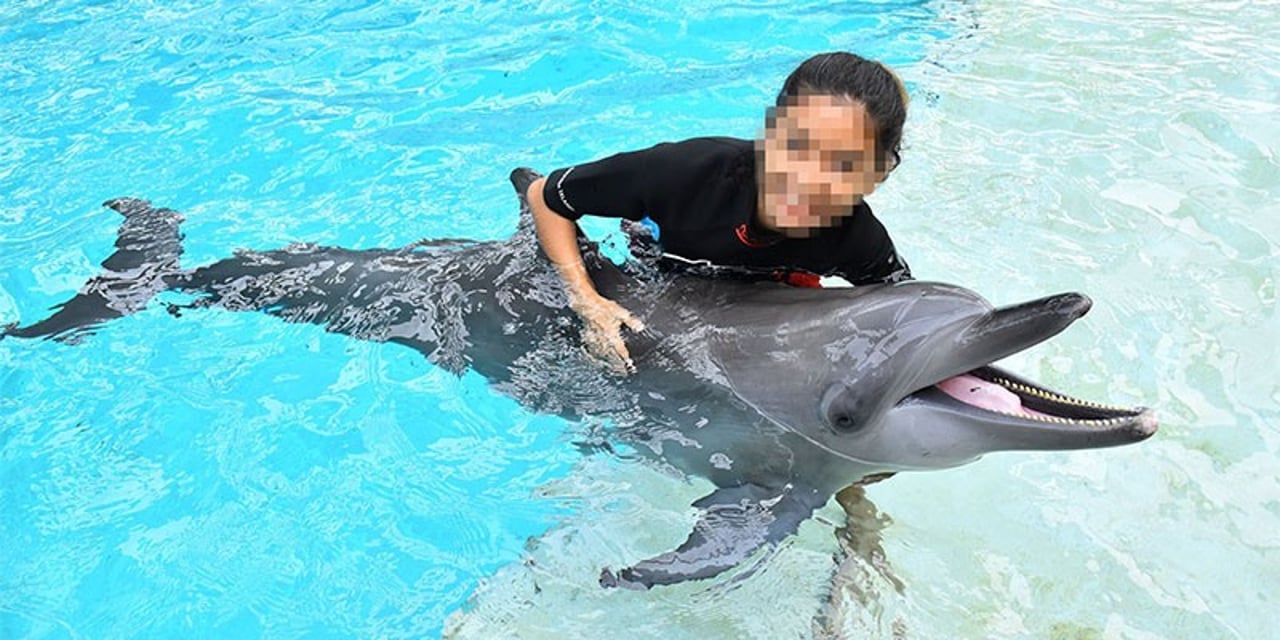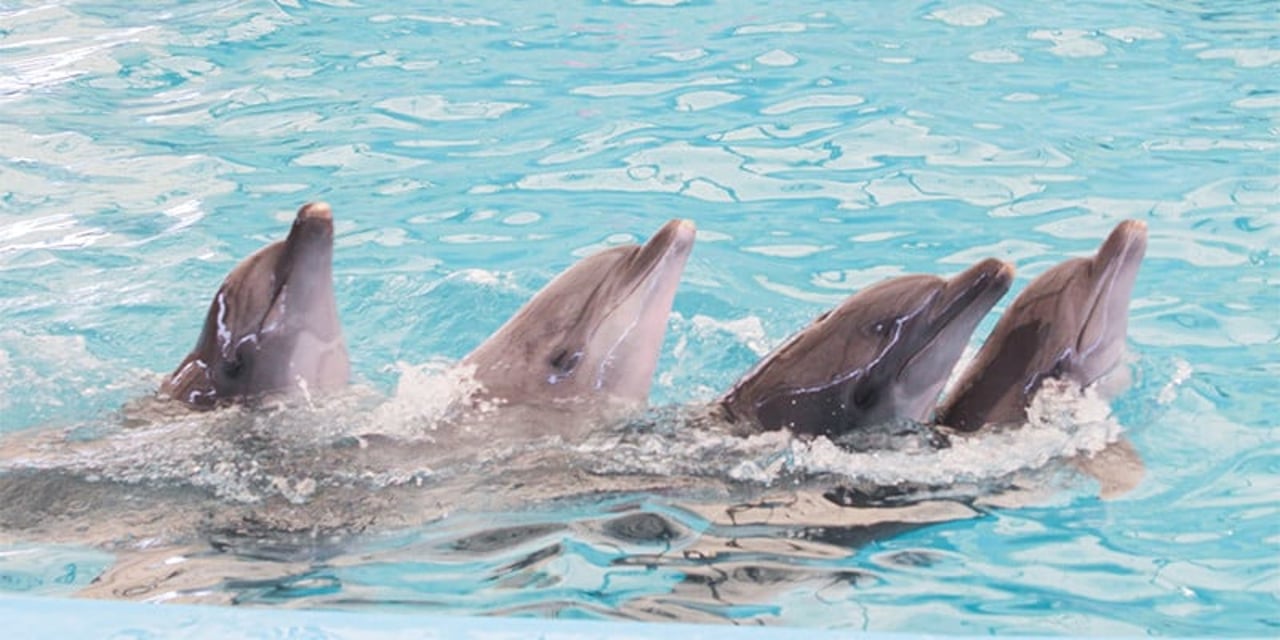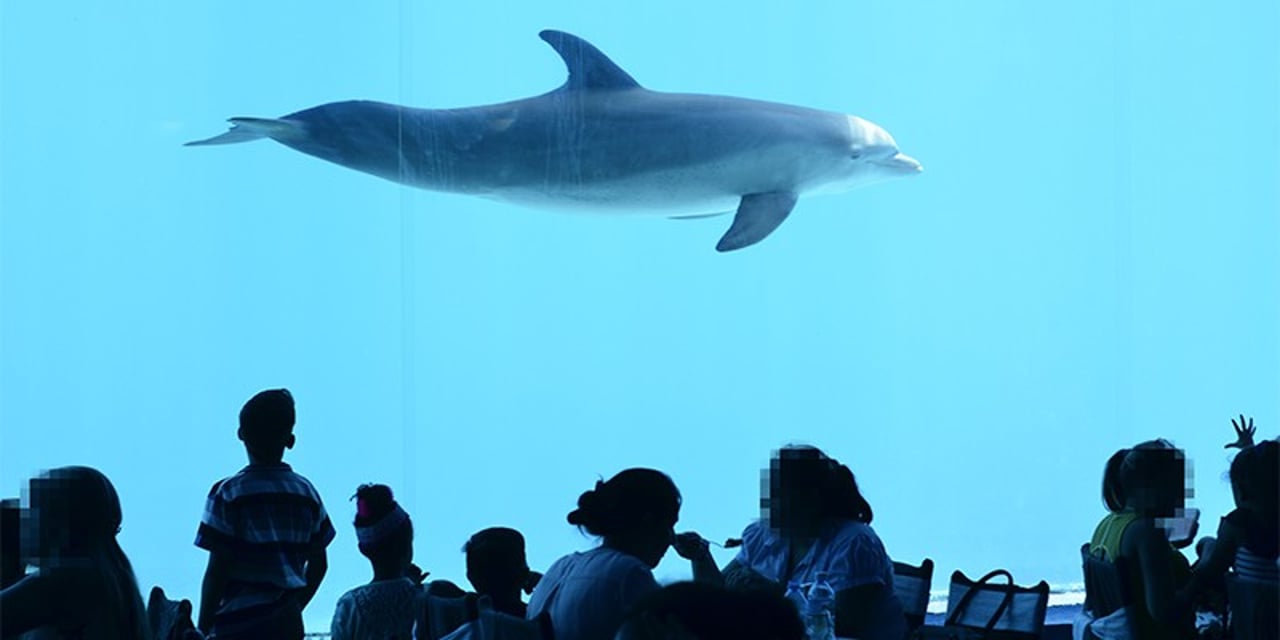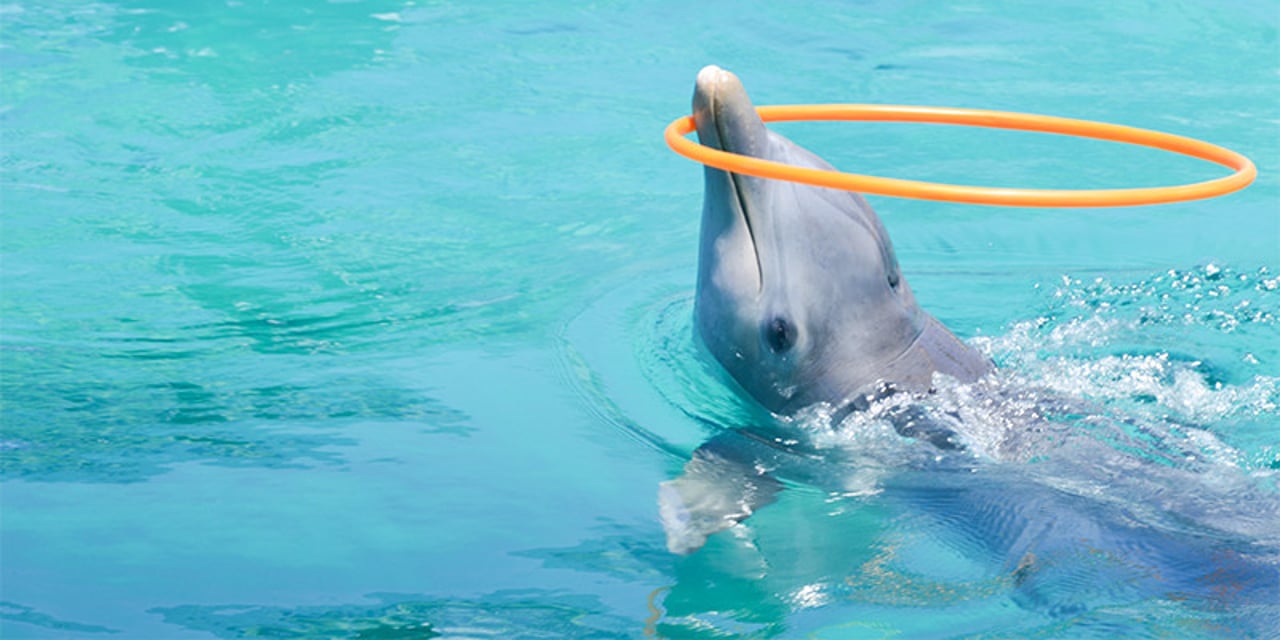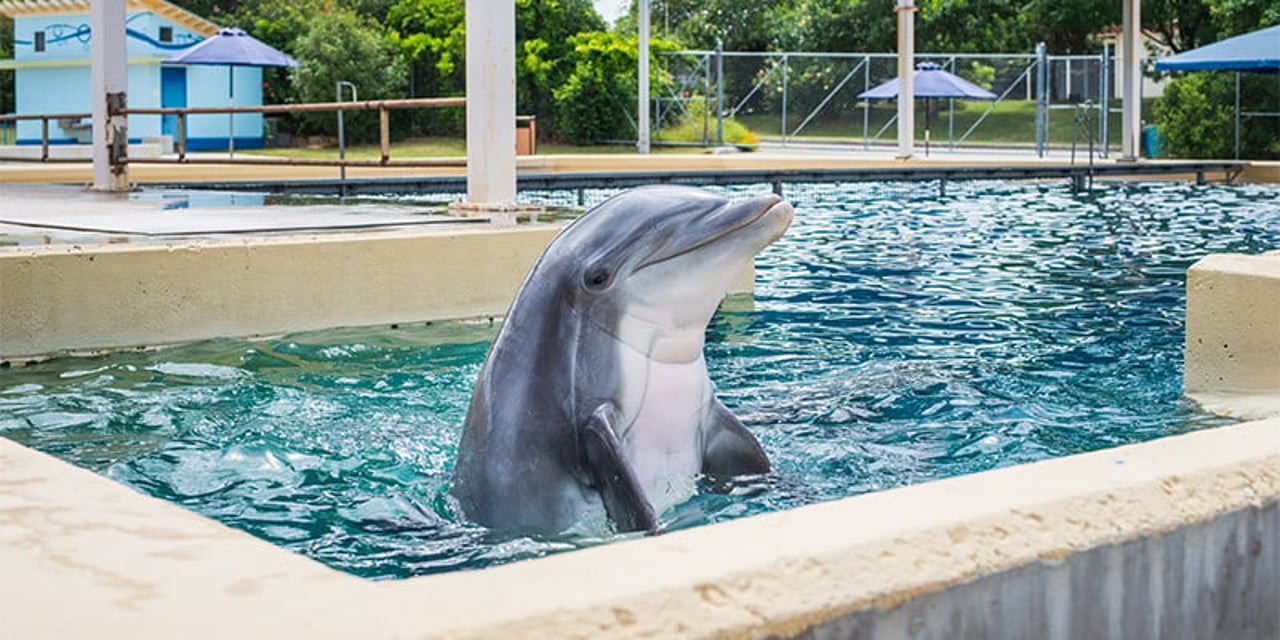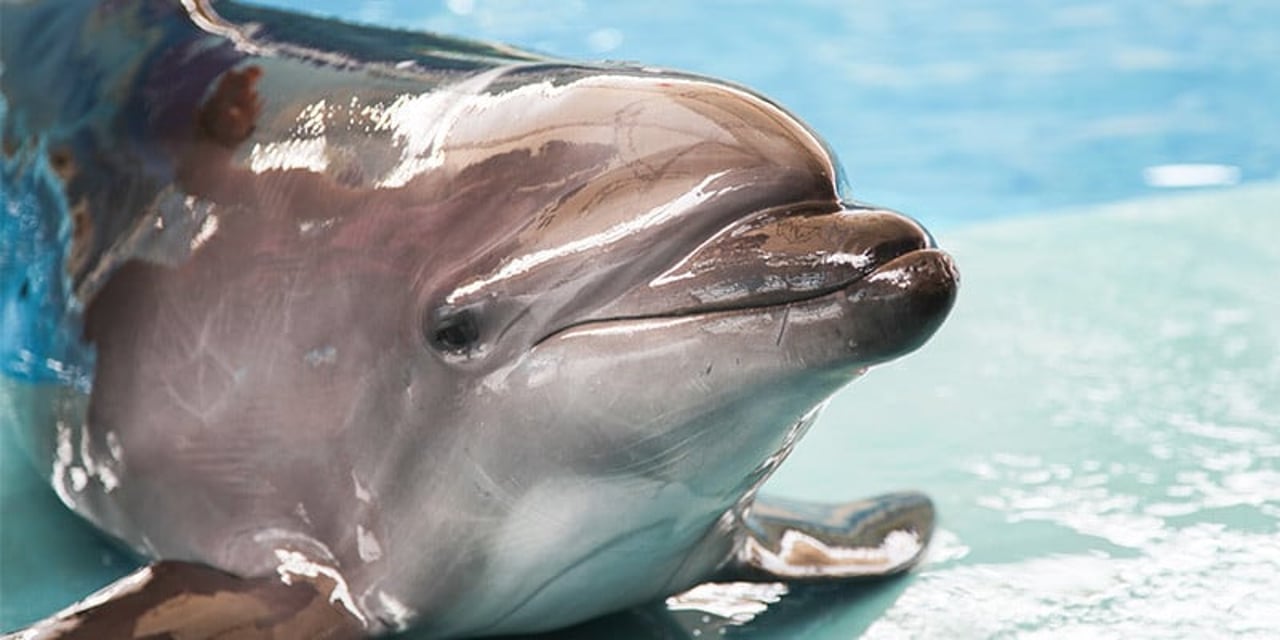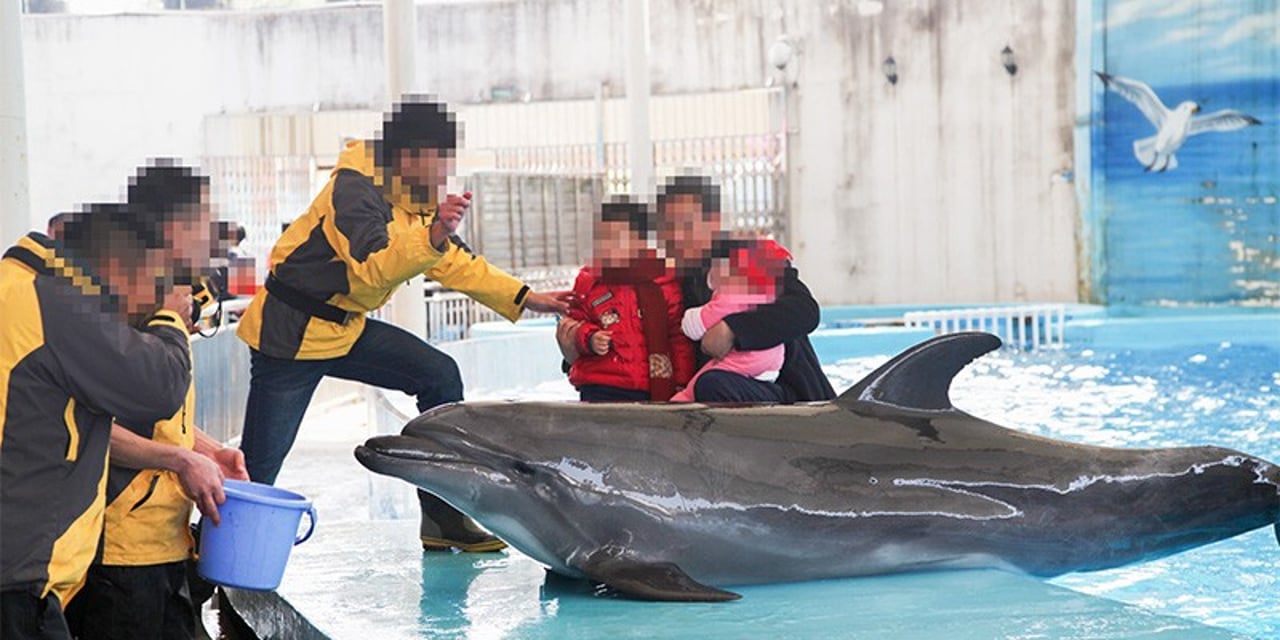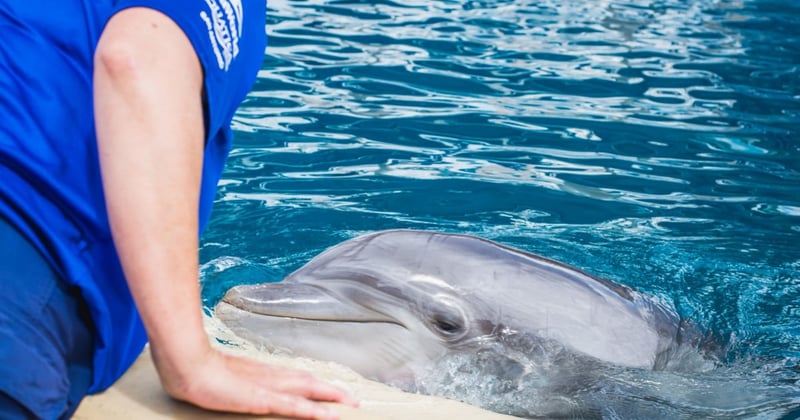
Research shows that dolphin venue visitors are unaware of the conditions or needs of dolphins. Confined to shallow and tanks and poor conditions, dolphins in captivity have nothing to smile about.
Our new ‘Behind the smile' report exposes the horrific suffering caused to thousands of dolphins by entertainments sold to tourists as innocent fun. After two years of research, we present a damning global picture of a cruel and multi-billion dollar industry, bolstered by irresponsible travel companies and false conservation and education claims.
Here’s a snapshot of our findings…
Counting cruelty in numbers
We found 336 dolphin-keeping venues open to the public in 54 countries worldwide, ranging from Argentina to Vietnam. Together they inflict cruel and unacceptable captivity on 3,029 dolphins.
More than 60% of the world’s captive dolphins are held by five countries:
- China – 23% in 53 venues
- Japan – 16% in 53 venues
- USA – 13% in 28 venues
- Mexico – 8% in 29 venues
- Russia – 5% in 15 venues
Forced to live unnaturally
We found that 66% of dolphins (1,770) at 233 venues were kept in small, barren concrete tanks that measured just 444m² on average. That’s a massive 200,000 times smaller than a dolphin’s wild range.
Some facilities are located along tropical coasts and use sea pens to contain the dolphins. These may sound more natural, but are still 77,000 times smaller than the dolphin’s wild territory.
Distressingly 575 dolphins were kept in indoor tanks away from sunlight or any other weather they would naturally experience in the wild.
None of the venues we researched were giving these highly intelligent, naturally social, free-ranging animals anything like the space they needed to thrive.
Show-stopping suffering
- 93% of all facilities that we researched were holding dolphin shows. Some shows involved trainers surfing on dolphin backs. In others, dolphins wore costumes – even sunglasses – and were encouraged to spin around to rock-concert-loud music (110db).
- 66% offered swim-with activities.
- 75% offered people the chance to get close to and touch dolphins for selfies
- 23% offered dolphin-assisted therapy
Such activities and close contact with people are unnatural to dolphins, but they are lucrative money-spinners.
Making money from misery
Captive dolphins in the tourism industry make a lot of money for their venues – a massive $1.1–$5.5 billion annually. A single dolphin can make as much as $400,000–$2 million per year for a venue. Such a huge amount explains why venues refuse to stop the shows.
The USA is the most visited country by travellers participating in dolphin experiences - 60% had visited a US dolphin venue in the past four years.
Fuelling captive distress
One in four tourists visits a dolphin venue because it is part of their tour package or was suggested to them by their tour operator. We researched 31 leading travel companies and found that two out of three companies offer at least one of the ten largest dolphin facilities in their products. Some offer as many as eight.
Expedia Group promotes 32 dolphin facilities across many countries – its ticket sales support keeping more than 500 dolphins in inhumane conditions.
Thankfully 11 companies including Booking.com, Virgin Holidays and British Airways have stopped promoting and selling tickets to the top 10 dolphin facilities - and TripAdvisor has just joined this growing list!
Loving dolphins living wild
80% of people said they would prefer to see dolphins in the wild if they could. However, 55% said they didn’t see anything wrong with going to a dolphin show.
Nick Stewart, our global head of campaigns for dolphins, said:
“Our research shows that most people visit dolphin venues because they love dolphins, but they don’t yet understand what dolphins need for a happy life and how captivity stops that happening. And the industry also perpetuates this lack of understanding through misleading information about its conservation and educational mission and the family fun it offers. Sadly, the dolphin’s smile, which is simply the shape of their jaw, gives people the impression that these beautiful animals are happy in captivity – nothing could be further from the truth"
With your help
We are determined to stop the cruelty. We’ll be pressing dolphin venues to phase out dolphin entertainments and end captive breeding or the snatching of dolphins from the wild. And because dolphin entertainment is currently propped up and supported by the travel industry, we’ll be calling on travel companies to stop selling tickets to or promoting it.
This is not going to be an easy win. Captive dolphin venues make billions of dollars a year and they have already shown that they are not going to change their ways without a fight. But with your support, we’ll be ready for them.
Make a difference. Join our community.
We campaign to improve animals' lives in the UK and around the world. Why not join us today?
